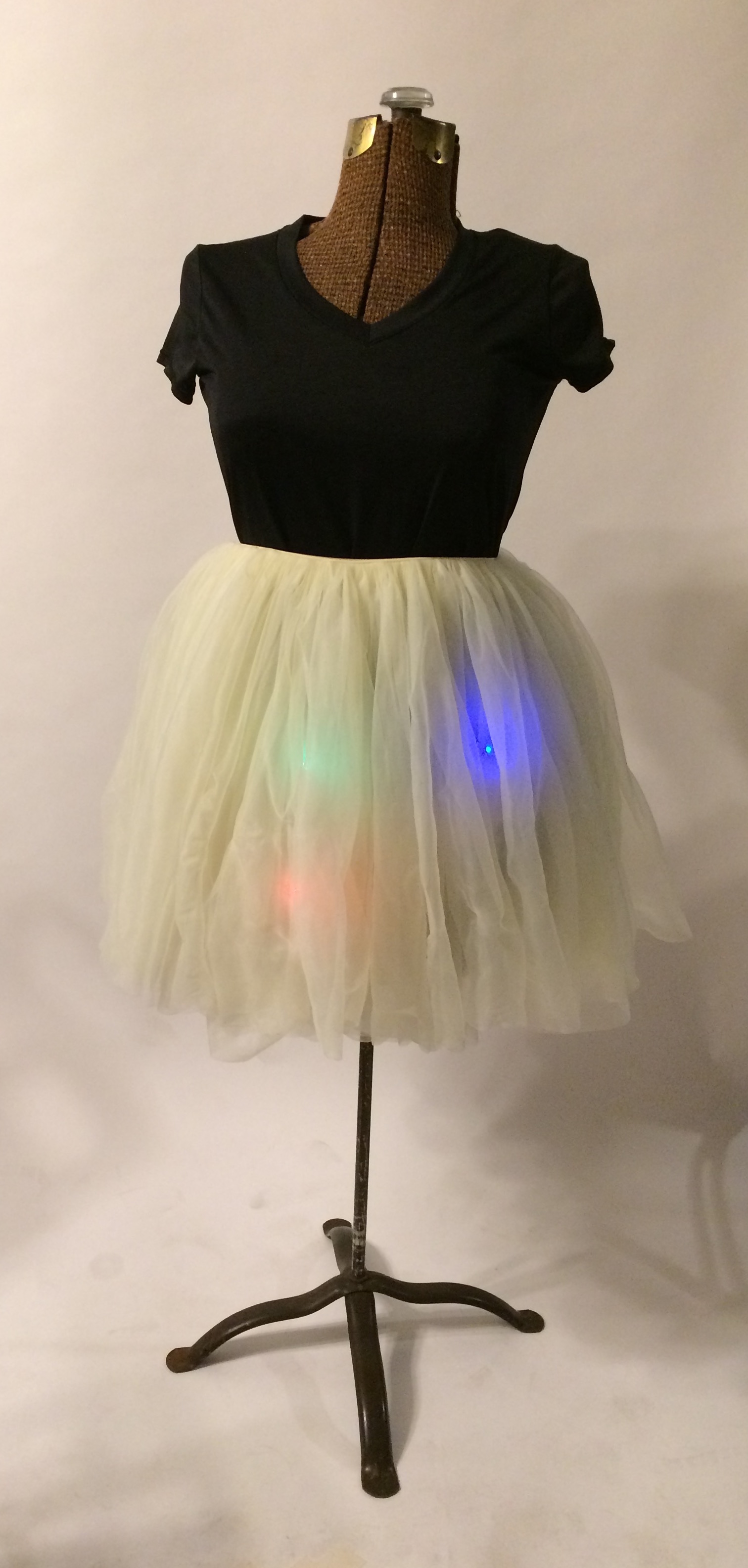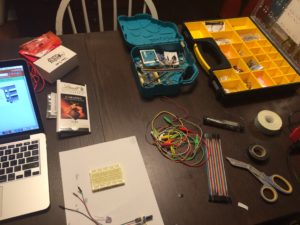
This period in education is an exciting one, one in which many students have technology at their fingertips. Although social media can be a distraction, it can also be a tool in the classroom. According to Ito et al. (2013), we can utilize social media for connected learning, and through connected learning, some equity gaps we see in school can be closed.
In this context, connected learning refers to the challenge of learning something new using only online resources, such as YouTube, a professional learning network, and Internet help forums. Traditional resources, such as friends, family, in-person classes and books are set aside.
Arduino and Me
To discover firsthand what it is like to learn using only connected learning resources, and to experience struggle through iterations of a project, I decided to learn to code Arduino and to use the Lilypad Arduino to illuminate a tutu.
When I began this adventure, I had little experience with microprocessors, programming, or circuits. My limited experience was from teaching Vex robotics in a tightly scaffolded environment, where it is almost impossible to wire inputs and outputs incorrectly.
 This project was a huge stretch for me, but it was worth it. As Papert, the father of making and the theorist behind constructionism said, there are “Eight Big Ideas Behind the Constructionist Learning Lab” (as cited by Burker, 2015, Loc 1687). By working on this project, I constructed my own learning by doing, using technology as a building idea, having hard fun, and making to learn – the first four of those eight big ideas.
This project was a huge stretch for me, but it was worth it. As Papert, the father of making and the theorist behind constructionism said, there are “Eight Big Ideas Behind the Constructionist Learning Lab” (as cited by Burker, 2015, Loc 1687). By working on this project, I constructed my own learning by doing, using technology as a building idea, having hard fun, and making to learn – the first four of those eight big ideas.
WHY I KEEP RETURNING TO THIS PROJECT
By the end of summer 2017, I had illuminated a tutu using an Arduino LilyPad and four Sewable NeoPixels. I strung those LEDs together using insulated wire and electrical tape, knowing that I would like to return to it sometime and finish it in a more elegant fashion.
I was prompted to continue my project when a2geeks shared a request for makers for their Ann Arbor Creativity & Making Expo 2018 (AACME – formerly Ann Arbor Mini Maker Faire). I appreciate the collaborative and social nature of the maker community, and I wanted to share my process of going from beginner to maker with other hopeful Arduino users.
To prepare for AACME I attempted to sew conductive thread to connect my NeoPixels to my LilyPad, adding eight more NeoPixels to my project for a total of 12. I dealt with some cross-circuiting that prevented my LEDs from lighting. In frustration, I learned to solder, hoping to bypass the need to sew with conductive thread. After nearly starting my project on fire, I realized that exposed wire and fibers are incompatible. I then learned to unsolder and again practiced with the conductive thread. This time, with practice, patience and experience, I was able to illuminate all 12 NeoPixel LEDs.
My display at AACME was a battle-scarred tutu with cuts and burns and melted threads that truly belied the hard-won learning I did. I loved it!
please watch my maker video about how I completed this project:
Resources That I Used For Learning Arduino
- Tutorial 01 for Arduino: Getting Acquainted with Arduino
- Arduino Programming Videos // Maker 101
- How To Use a Breadboard
- Installing Additional Arduino Libraries
- Arduino Product Forum
- LilyPad Pixel Board Hookup Guide
- Sewable NeoPixels
- NeoPixel Library
Related Posts
If you’re interested in all the details about this project, you can read my blog posts. In my first post, you can read about my decision to learn to code Arduino. You can read an update about my early progress in my second post. You can read about how I concluded my summer work last year in my third post. My fourth post details how and why I kept working on this project to share it with other makers.
References
Burker, J. (2015). The invent to learn: Guide to fun. Torrance, CA: Constructing Modern Knowledge Press. Retrieved from https://www.amazon.com/Invent-Learn-Tinkering-Engineering-Classroom-ebook/dp/B00CQDRF84/ref=sr_1_1_twi_kin_1?ie=UTF8&qid=1501470374&sr=8-1&keywords=kindle+invent+to+learn
Ito, M., Gutiérrez, K., Livingstone, S., Penuel, B., Rhodes, J., Salen, K., . . . Watkins, S. (2013). Connect learning: An agenda for research and design: A research synthesis report of the Connected Learning Research Network (summary)(Rep.). Irvine, CA: Digital Media and Learning Research Hub.
Images
All images and videos on this page were created by Sarah Van Loo.
